What is stop-motion animation? How does it work? What is the history of stop-motion animation? If you wondered about these questions, you've come to the right place - we have the answers for you.
This technique has been used to create some of the most iconic films ever made. For example, The Little Prince, Coraline, and The Nightmare Before Christmas. In this article, we will explore what stop-motion animation is and how it can be used to create amazing visuals.
What is a stop-motion animation?
What is stop-motion animation's definition?
Stop-motion animation is a captivating filmmaking technique that brings inanimate objects to life through a series of meticulously crafted movements.
Traditional animation methods involve drawing or computer-generated imagery (CGI). On the contrary, stop motion relies on physical objects manipulated frame by frame to create the illusion of motion. Each frame captures a slight adjustment in the position of the object. When played in sequence at a rapid pace, it gives the impression of fluid movement.
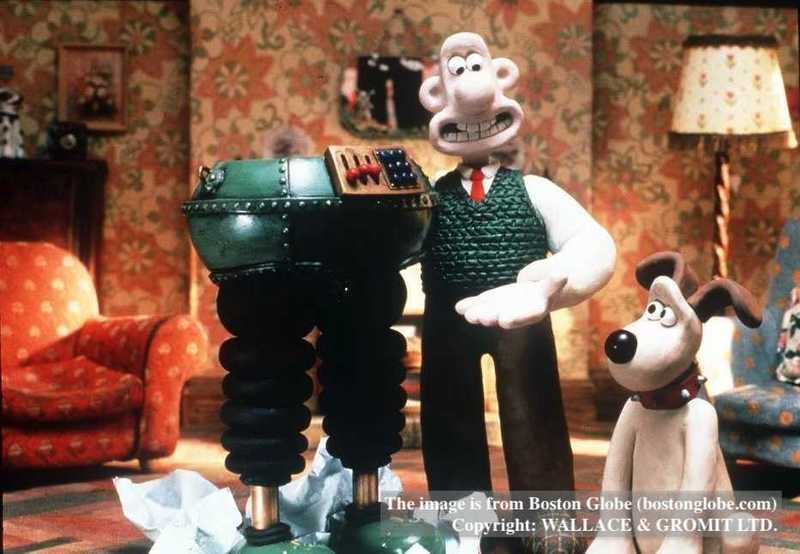
"The Wrong Trousers", copyright: WALLACE & GROMIT LTD., published by Boston Globe
What is stop-motion animation used for?
Stop-motion animation is often used when creating films for children. This is due to an easy way to tell stories with characters that don’t exist in the real world. It’s also a great way to combine live-action footage with animation.
Special effects can be added on top of the footage, allowing filmmakers to create engaging visuals without relying on complex computer graphics. Stop-motion animation is also a great tool for creating educational content. It allows creators to easily explain complex concepts in a visually engaging way.
This technique is still popular today, with filmmakers using it to craft unique visuals in commercials and feature films. This type of animation requires patience and creativity, but the result can be truly captivating.
How to create a stop-motion animation?
In its traditional understanding, the stop-motion animation is created manually to later be processed to play seamlessly. However, you can make your videos appear to look like "flip book animation".
How to apply the stop-motion effect to your video:
- Open the online stop-motion video maker.
- With the "+ Add file" button, upload the video you wish to work on.
- Choose the "Speed" and "Freeze Frame Duration". You can also "Add Reverse Playback" if you want.
- Preview your video and hit "Export" when you are satisfied with the results.
- Download your video and share it with friends.
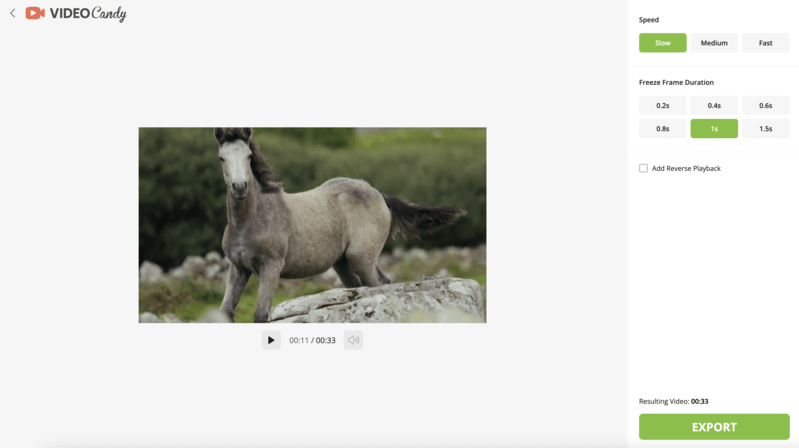
After you make the changes, you can continue working with the file: add background music to the video, trim extra parts, or even convert it into a GIF.
History of stop-motion animation
Before filmmaking
Before the emergence of celluloid film in 1888, animation was limited to methods like the zoetrope. Various inventors and scientists experimented with stop-motion photography to create moving images, including stereoscopic animation.
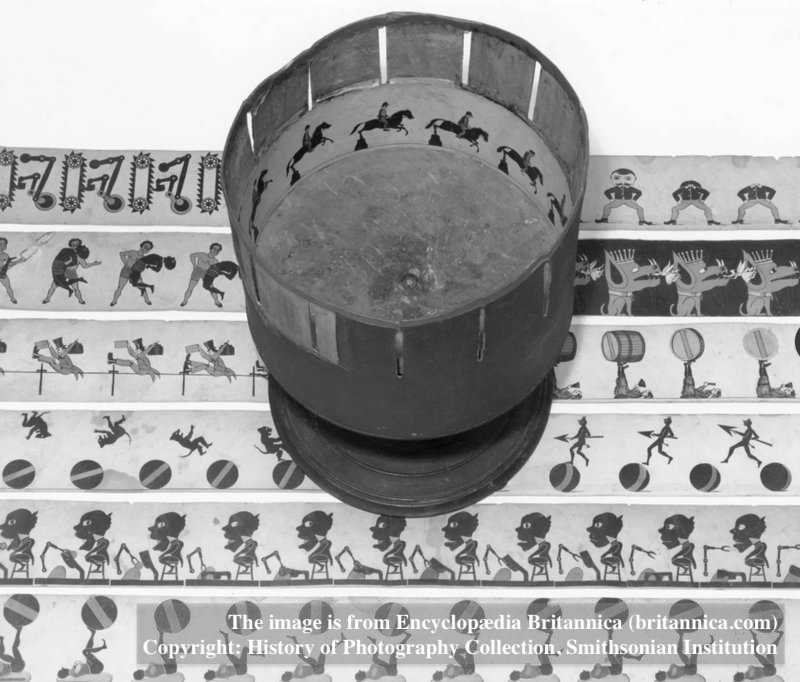
The Zoetrope, copyright: History of Photography Collection, Smithsonian Institution; published by Encyclopædia Britannica
Joseph Plateau and Jules Duboscq developed early devices combining stereoscopy with animation principles, although the ambitious plans were never realized. Additionally, pioneers like Johann Nepomuk Czermak and Peter Hubert Desvignes explored other methods for creating animated sequences, based on stereoscopy and stroboscopic effects.
Notably, Étienne-Jules Marey's zoetrope used plaster models based on chronophotographs. It marked a significant advancement in animation technology before the widespread adoption of celluloid film.
Silent films
During the silent film era from 1895 to 1928, stop motion, closely related to the stop trick, emerged as a notable method. This technique was often employed by pioneers like Georges Méliès and Segundo de Chomón.
The first stop-motion movie, dating back to 1898, was titled "The Humpty Dumpty Circus". This was a brief film that employed articulated dolls to replicate the actions of circus performers.
(1).jpg)
The Humpty Dumpty Circus, published by Lost Media Archive Fandom
Innovations in stop motion were seen in films such as "The Haunted Hotel" (1907). Artists like J. Stuart Blackton, Émile Cohl, and Ladislas Starevich made significant contributions to the development of stop-motion animation during this period.
Willis O'Brien's work in films like "The Dinosaur and the Missing Link" (1915) laid the groundwork for lifelike creature animation. Also, Helena Smith Dayton showcased clay animation with her "Caricatypes".
Despite challenges in preservation, these early works set the stage for the advancements to come in animation.
1930s - 1940s
During the 1930s and 1940s, significant advancements in stop-motion animation were made by pioneers like Ladislas Starewicz, George Pal, and Willis O'Brien. Starewicz completed the first feature-length stop-motion film, "The Tale of the Fox", though it faced delays in release.
George Pal developed the Pal-Doll technique, later known as puppetoon, achieving notable success with Academy Award-winning short films. Willis O'Brien's groundbreaking animation in "King Kong" (1933) set a high standard for emotional depth in stop-motion characters.
.jpg)
King Kong (1993), copyright: RKO Radio Pictures Inc.; published by Encyclopædia Britannica
Additionally, the era saw the production of the first British, Belgian, and Czech animated productions, showcasing the growing international reach of stop-motion animation.
1950s
Ray Harryhausen became renowned for his stop-motion effects in fantasy films like "The Beast from 20,000 Fathoms" (1953) and "Clash of the Titans" (1981). The first US feature film using a technique other than cel animation was the stop-motion adaptation of "Hänsel und Gretel" (1954).
Additionally, Karel Zeman's "Journey to the Beginning of Time" (1955) showcased stop-motion animation of dinosaurs. Art Clokey's "Gumbasia" (1955) led to the creation of "The Gumby Show" (1955–1989) and "Davey and Goliath" (1960–2004), featuring clay animation.
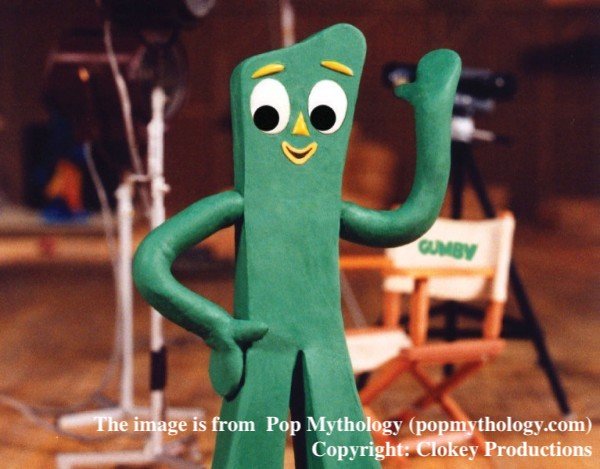
Gumby; copyright: Clokey Productions; published by Pop Mythology
1960s - 1970s
In the 1960s and 1970s, stop-motion animation continued to evolve with the emergence of iconic characters and innovative techniques. Notable examples include the creation of "Pat & Mat" in Czechoslovakia in 1976, which gained popularity through a series of TV episodes.
Japanese animator Tadahito Mochinaga played a significant role in popularizing puppet animation, notably through his work on "Rudolph the Red-Nosed Reindeer" (1964) and other collaborations with Rankin/Bass Productions.
British studios like Smallfilms and Aardman Animations produced beloved stop-motion series such as "Clangers" and "Morph". Filmmakers like Will Vinton and Co Hoedeman pushed the boundaries of the medium with experimental films and Oscar-winning productions.
-1.jpg)
The Clangers, published by Warped Factor
Disney also experimented with stop-motion techniques in TV specials, incorporating them into their iconic characters like Mickey Mouse.
1970s - 1980s
In the 1970s and 1980s, stop-motion animation continued to be used in iconic films like the original "Star Wars" trilogy, with Phil Tippett pioneering go-motion for realistic movement. Aardman Animations expanded its repertoire, producing award-winning clay animated films and music videos, including the Oscar-winning short "Creature Comforts".
Will Vinton's team released ambitious projects like "The Adventures of Mark Twain" and became renowned for commercial work featuring characters like The California Raisins. Additionally, filmmakers like Jiří Barta and Nick Park made significant contributions to the medium with fantasy films and beloved characters like Wallace and Gromit.
1990s
In the 1990s, stop-motion animation saw notable developments with the emergence of projects like "The Nightmare Before Christmas". The movie was directed by Henry Selick and produced by Tim Burton, becoming a box-office success.
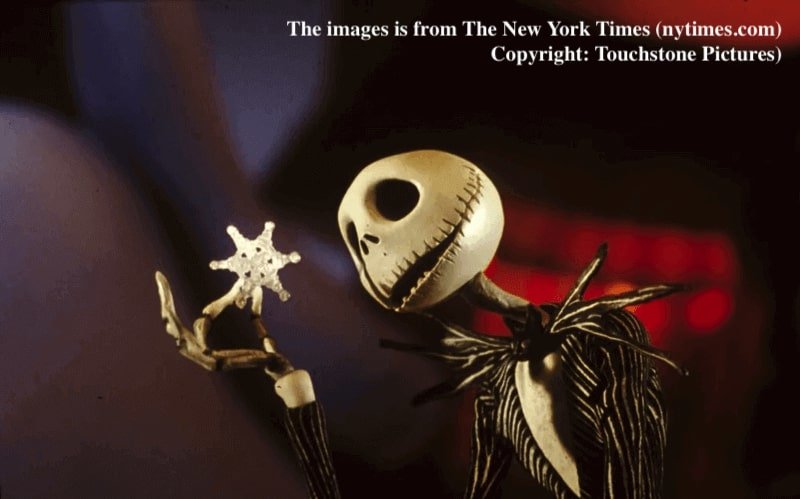
The Nightmare Before Christmas, copyright: Touchstone Pictures; published by New York Times
Additionally, the decade witnessed the creation of iconic television series such as "South Park". This marked the transition from student short films to widely popular shows.
Other significant contributions include the release of "The Secret Adventures of Tom Thumb" and the debut of stop-motion series like "Bob the Builder" and "The PJs", showcasing the popularity of the medium across different formats.
2000s - Present
In the 21st century, stop-motion animation continued to thrive. Notable projects include the BBC's "Summerton Mill" and the Korean series "Curucuru and Friends", demonstrating its versatility across different cultures and platforms.
Additionally, acclaimed feature films such as "Fantastic Mr. Fox" and "Anomalisa" have showcased the medium's enduring appeal and artistic potential, garnering critical acclaim and commercial success.
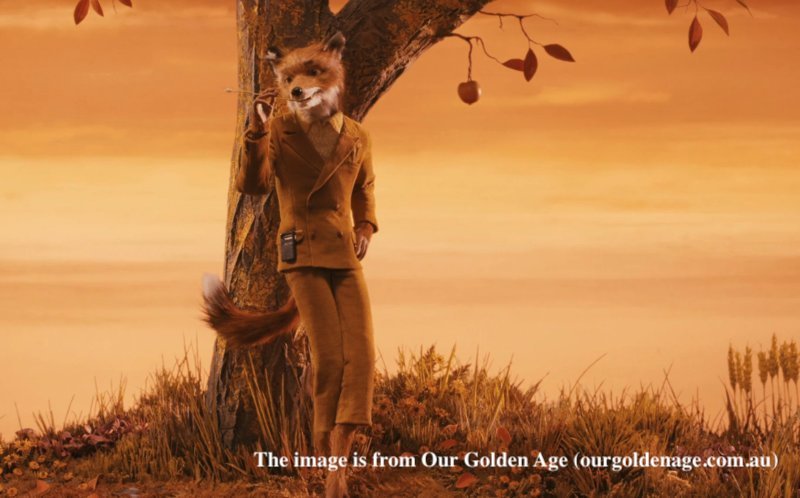
The Fantastic Mr. Fox, published by Our Golden Age
The use of stop-motion animation in popular television shows like "Robot Chicken" has also remained prevalent, further solidifying its place in contemporary media.
How stop-motion animation is captured?
Photography
Stop-motion animation is a fun and creative way to bring motion to a scene without having to rely on actors or special effects. It involves taking individual still photographs of a puppet or object, and then moving it ever so slightly for the next frame. This process is repeated until the desired sequence has been captured, creating the illusion of motion from stationary objects.
In order to capture this animation, a good camera and lighting setup are essential. The camera should be mounted on a tripod for stability, and should be able to take crisp, clear photos with minimal noise. Lighting should be even, so all parts of the scene can be seen and lit equally.
Video capturing
Another way to create stop-motion animation is by recording video. This type of animation is often referred to as claymation. This is because it involves sculpting clay into various shapes and then moving it slightly between frames of the video. The clay can be manipulated by hand or with tools such as scissors, knives, and pins. The video is then edited to create the effect of movement.
FAQ
What is the ideal frame rate for stop motion animation?
It is typically 24 frames per second (fps) for smooth motion. However, depending on the desired effect, lower dimensions (e.g., 12 fps or 15 fps) can be used for a more jerky or stylized appearance.
How does the concept of "inbetweening" apply to stop motion?
In traditional animation, it refers to the creation of intermediate frames between two keyframes to smooth out motion. In stop motion, the effect is achieved by carefully adjusting the position of the model or puppet and shooting frames between the start and end positions.
How do animators address issues of "puppet drift"?
"Puppet drift" occurs when an object or character moves slightly between frames, even if unintentional, due to factors like slight pressure or unintended shifts in position. To counteract this, animators use meticulous control techniques.
Conclusion
Stop-motion animation is an intriguing and creative way to tell stories, create visuals, and produce fun videos. However, working on such movies requires a lot of patience and attention to detail.
With some tools, like Video Candy, you can even apply the stop-motion effect to your videos. So, go ahead and explore the possibilities that stop-motion animation has to offer!
More free video editing tools
- Convert your video to a more suitable format.
- Use the online video editor to fine-tune your videos.




